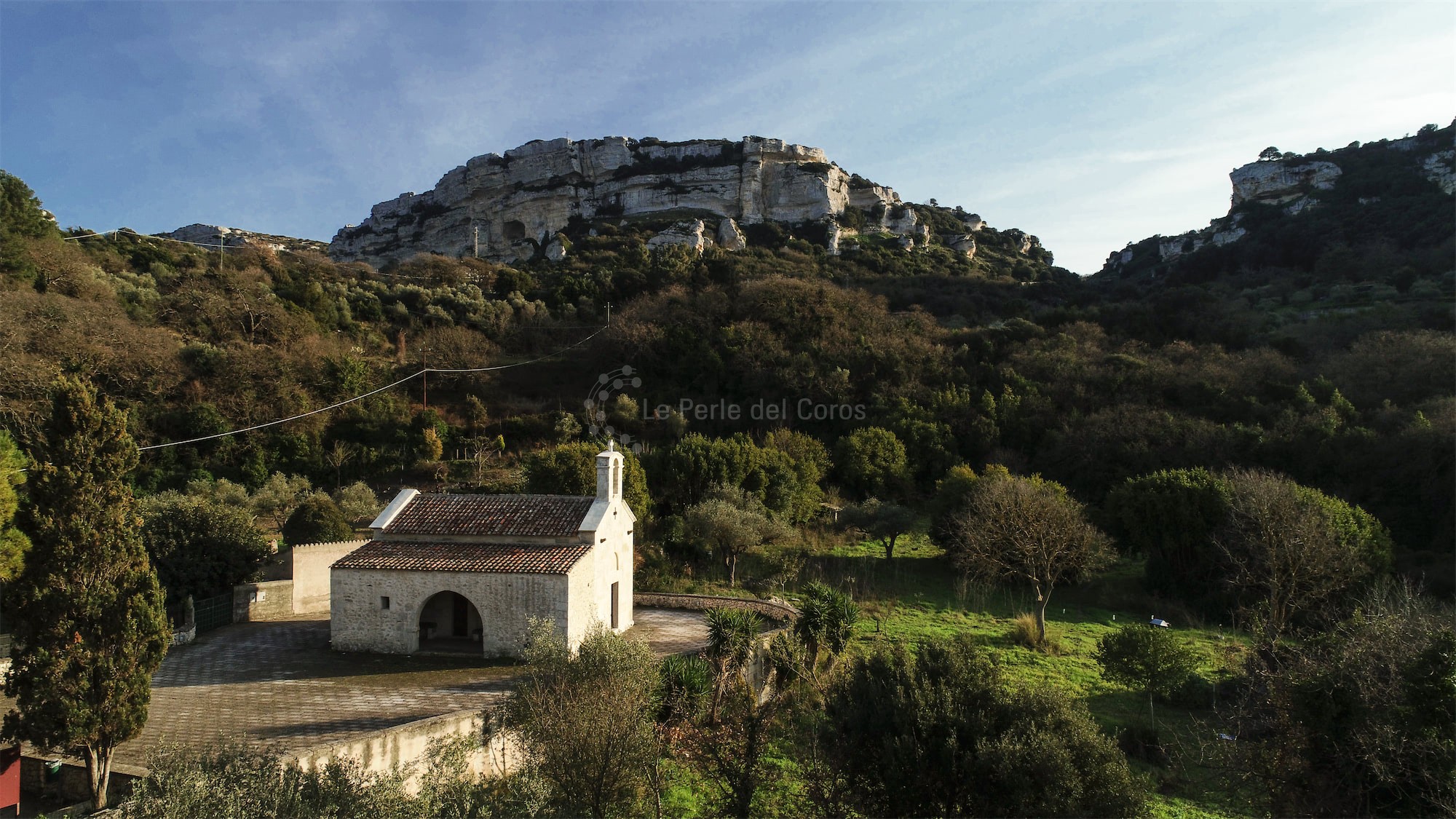
Cargeghe
Country Church of Saint Mary de Contra
The little Church of Saint Mary of Contra is one of the smallest Romanesque churches of Sardinia, situated in the countryside of Cargeghe, in a valley on the outskirts of the village, and surrounded by olive groves and orchards. The church is one of the locations of the film “Padre Padrone”, taken from the novel by Gavino Ledda. Today several cultural events are still hosted here, besides religious rites. It is included in the project “Itineraries and Networks of the Romanesque in Corsica, Sardinia and Tuscany” (IterrCost), financed by The European Union.
A papal seal of Alexander III of 1175 names the church of Sanctae Mariae in Contra among the possessions of the Camaldolese monks, in the Episcopacy of the Judgedom of Torres, dependent on the monastery of the Holy Trinity in Saccargia (tn* the Judgedom of Torres was one of four Sardinian medieval kingdoms, called Judgedoms or Judicatures: independent states that took power in Sardinia in the Middle Ages, between the 9th and 15th century AD). The building is oriented according to tradition, with the apse facing east. The church still has its original plan with a single nave, the wall structure of the apse, which dates back to the 12th century, the simple portal with architrave, monolithic door frames and an upper round arch. The main façade is dominated by a bell gable consisting of a light frame made of stone and a bell . On the main wall there are two basalt shelves fluted on the upper side, on which a wooden beam was placed to support a canopy or a portico to protect the entrance. On the two smaller front walls, there are two little cruciform windows, as in many other Romanesque churches of the area. Thanks to clear-cut and austere shapes, the church displays the most essential features of Romanesque architecture. We can find them in the double pitch wooden trussed roof, the apsidal basin, the trabeated doorway with monolithic door frames and three narrow single lancet windows that illuminate the inside. Along the roofline and the apse, today there is a stone frame made of limestone, the cyma moulding pattern of which is also shown along the sides of the rock slabs that cover the top of the two walls of the main façade and the back wall. The inside lacks decorative elements and is characterised by the exposed stone walls and six trusses. The floor is made of rectangular slabs of limestone and the natural light of the main body of the church is provided only by the light that filters through the single lancet windows on the southern side of the church and the apse. On the wall there is a painting (copy of a Sixteenth century painting no longer there) that represents the birth of the Virgin Mary, depicted in traditional style, celebrated on 8th September, in which the maidservants wear the local traditional Sardinian costume. Additionally, two fragments of a frame are shown, dating back to the second half of the 18th century, in dark wood with engraved roses and gyres, with articulate moulding on which we can still see traces of the original pigmentation. Another two objects are worthy to be mentioned, the relics of a ciborium once placed on the altar and a Sixteenth-century antependium, richly decorated with natural themes, today placed at the front of the altar.




